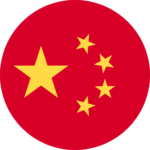
By Diego Morro, Victoria Yvonne Bien-Aimé and Lucas Engel
This week, African and Chinese leaders are gathering in Beijing for the 2024 Summit of the Forum on China-Africa Cooperation amid significant anticipation from observers about the summit’s key priorities and whether substantial pledges will emerge.
Chinese overseas lending and development finance to African countries is rising again, following a notable decrease in lending since 2016.
New data in the Chinese Loans to Africa (CLA) Database and the accompanying policy brief published by the Boston University Global Development Policy Center reveals that China made 13 new loan commitments worth a cumulative $4.61 billion to eight African countries and two regional financial institutions in 2023.
However, the increase most likely does not represent a return to consecutive annual commitment figures above $10 billion, as occurred in the early years of the Belt and Road Initiative (BRI). Instead, China appears to be looking for a more sustainable equilibrium level of lending and is experimenting with a strategy comprising three basic components: fewer funds, new risk mitigation measures, and a focus on relationship maintenance.
From 2000-2023, Chinese loans to Africa totalled $182.28 billion across 1,306 loans, benefiting 49 African countries and seven regional institutions, as seen in the graph below. The Export-Import Bank of China (CHEXIM) and the China Development Bank (CDB) were responsible for 83.1% of these commitments, while commercial banks like the Industrial and Commercial Bank of China (ICBC) and the Bank of China (BoC), along with Chinese companies and state-owned enterprises, accounted for 15.6%.

During this period, 78.5% of these loans were directed towards Africa’s energy, transportation, information and communications technology (ICT), and financial sectors. Angola is the largest recipient to date, followed by Ethiopia, Egypt, Nigeria, Kenya, Zambia, South Africa, Sudan, Ghana and Cameroon, which together received 68.2% of the total funds.
The year 2023 marked a notable shift in Chinese financing support toward African financial institutions, as over half of the loans were extended to multilateral and nationally owned banks in Africa. This included a $400 million loan from CDB to the African Export-Import Bank (Afreximbank), aimed at supporting small- and medium-sized enterprises (SMEs) involved in intra- and extra-African trade. In contrast, from 2000-2022, a mere 5.29% of Chinese loans to Africa were directed to the continent’s financial sector.
In addition, 2023 witnessed the return of Chinese energy finance. Between 2021, the year China pledged to stop funding new overseas coal power projects and instead ramp up support for renewable energy, and 2022, Chinese lenders supplied no new energy loans to Africa. In 2023, China made three new loans amounting to $501.98 million for renewable energy projects in Africa: a transmission project, a hydropower project of comparatively modest size and a solar power project. The rebound in energy loans, albeit at a smaller scale and with a focus on greener projects, indicates that the “small is beautiful” approach to infrastructure lending is beginning to take shape in Africa.
Overall, China’s lending strategy in 2023 combines a focus on risk mitigation with a desire to reinvest in strategic relationships, a bifurcated strategy which may, at times, pull China in different directions.
China’s lending to Africa’s financial sector, particularly its provision of facilities for on-lending for SMEs and trade finance, is unique compared with previous years. Lending via African intermediary institutions offers several advantages. This partnership model promotes risk mitigation by outsourcing the ‘picking of winners’ to intermediaries with more in-depth knowledge of African markets. It allows China to extend finance to entities located within African multilaterals’ member countries without exposing Chinese creditors to elevated credit risks. The debt associated with CDB and CHEXIM SME on-lending and trade finance support facilities does not appear on individual sovereign governments’ balance sheets. The strategy also forms part of a broader shift towards multilateralizing China’s ‘patient capital’ approach, emphasizing long-term financial partnerships within South-South Cooperation frameworks.
When it comes to maintaining long-term relationships with strategic partners, however, risk mitigation appears to take a backseat. The African recipients of 2023 Chinese loans include China’s largest African borrower, Angola, as well as its third and fourth largest borrowers, Egypt and Nigeria. All three have recently struggled economically, and yet China has continued to lend to them. Despite Angola’s difficulties servicing existing loans, in 2021 and 2023, CHEXIM committed $79.7 million and $249 million to ICT projects in Angola, respectively. As financial risks have compounded in Egypt, China has maintained its unconditional and unsecured lending approach, extending a RMB 7 billion CDB liquidity loan to the Central Bank of Egypt. Finally, in the face of increasing inflation in Nigeria and a depreciating currency, China has revived financing for the Kaduna–Kano Railway Project with a $973 million CDB loan that replaces a cancelled CHEXIM loan.
This dual approach—balancing risk mitigation strategies with continued support for struggling long-term partners—reflects China’s desire to preserve its South-South relationships in a sustainable way.
However, the two objectives do not always align, which may, at times, pull China in opposite directions. As the quantity of lending moves to a lower level, it remains to be seen how it will affect the quality of China’s partnerships in Africa.
Diego Morro is a Data Analyst with the Global China Initiative at the Boston University Global Development Policy Center.
Victoria Yvonne Bien-Aimé is a Research Fellow with the Global China Initiative at the Boston University Global Development Policy Center.
Lucas Engel is a Data Analyst with the Global China Initiative at the Boston University Global Development Policy Center.










